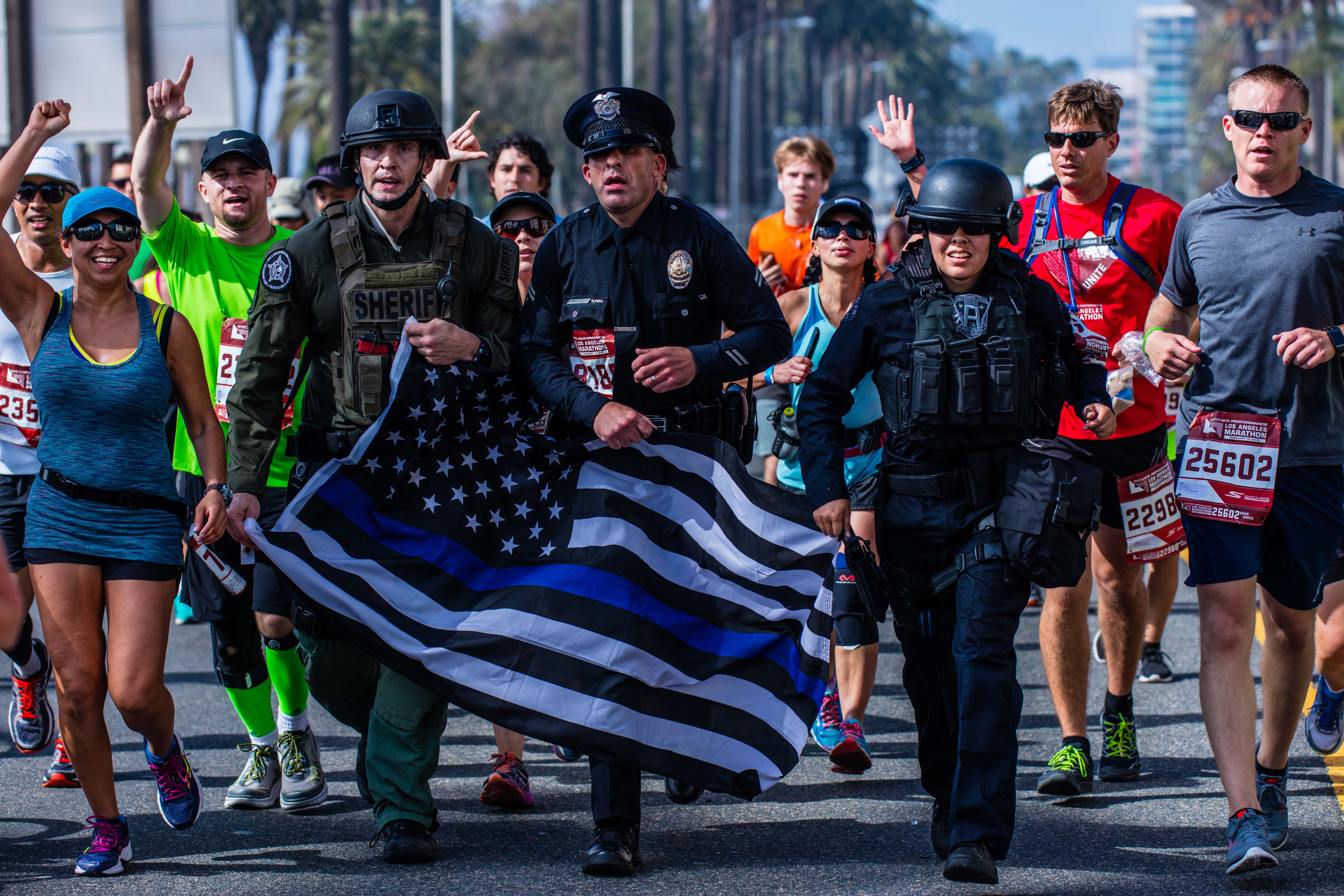The Los Angeles Board of Police Commissioners’ act of finding one officer in the Ezell Ford shooting case “out of policy” for shooting Ford as he tried to take the officer’s gun is a bizarre, ill-considered decision that demonstrates the Commission’s complete misunderstanding and erroneous application of case law, and will have terrible public safety consequences. When an officer has to choose whether or not to be proactive at the risk of possibly losing his or her career, we can only assume there would be a negative impact on public safety.
As taken from the Commission report, the facts surrounding the shooting are as follows: The officer attempted to detain Ford, suspecting he had possession of narcotics. Ford turned suddenly when the officer reached him, and tackled the officer to the ground. Ford then tried to take the officer’s gun—as evidenced by Ford’s DNA on the top and body of the officer’s holster. The partner officer shot Ford twice with no effect. With Ford still on top of the officer and trying to take his gun, the officer pulled out his backup gun and shot Ford once in the abdomen, causing Ford to go limp and allowing the officer to get out from under Ford.
The Commission used a “totality of the circumstances” review in deciding if the shooting was in policy, but went off the rails by using the wrong legal standard to guide its review. The Commission applied a holding in Hayes v. County of San Diego, a Ninth Circuit Court of Appeals case that ruled that a deputy sheriff’s “tactical conduct and decisions preceding the use of deadly force were relevant considerations under California law in determining whether the use of deadly force gave rise to negligence liability.” (Emphasis added)
Hayes was incorrectly applied in this instance because the Commission concluded that the initial detention of Ford was “unjustified,” not that it was negligent. According to the Commission, “The legally inappropriate detention of the subject that led to the subsequent altercation rendered the use of deadly force unreasonable and out of policy.”
An “inappropriate detention” is a Fourth Amendment issue, not an issue of negligence as in Hayes, and the misapplication of Hayes to Fourth Amendment issues resulted in the Commission’s absurd “out of policy” decision.
If an “unreasonable detention” was the issue, the Commission’s review should have been guided by Fourth Amendment cases, not a single case involving “negligence.” For instance, in Billington v. Smith, a prior Ninth Circuit case, the court ruled that, under federal law (including the Fourth Amendment), an officer’s negligent act that provokes a violent response “will not transform an otherwise reasonable subsequent use of force into a Fourth Amendment violation.” This was reiterated in another Ninth Circuit case, Sheehan v. City and County of San Francisco, where the court ruled that only when an officer intentionally and recklessly provokes a violent confrontation he or she is liable for the otherwise defensive use of deadly force.
What is a “reasonable use of force?” The United States Supreme Court has determined “‘reasonableness” of a particular use of force must be judged from the perspective of a reasonable officer on the scene, rather than with the 20/20 vision of hindsight.”
Applying the correct law, the shooting of Ford could have only been found “out of policy” if the detention of Ford was so unlawful and reckless that it provoked a violent confrontation. The Commission did not and could not make that finding. Even the Commission acknowledged that Ford turned suddenly and attacked the officer. The detention was not as unlawful and reckless as to provoke violence by Ford. Shooting Ford, who continued to try to take the officer’s gun even after being shot twice, was a reasonable use of force.
Equally disturbing is the Commission’s failure to follow relevant California law that holds that even if an officer makes an illegal detention, a suspect doesn’t have a free pass to try to injure or kill the officer. In the case of In Re: Richard G., a California Court wrote that it would “not immunize crimes of violence committed on a peace officer, even if they are preceded by a Fourth Amendment violation.”
The aftermath of the adjudication of the Ford shooting as “out of policy” has sent a clear message that use of force by an officer to defend his or her life will be deemed “out of policy” if the detention is determined by the Commission to be “unreasonable.” Or, put another way, the Commission seems to believe that if an officer should not have put himself in a situation requiring use of force, the officer cannot use deadly force even if his or her life is in danger.
Every person in the City of Los Angeles, police officers and residents, should be greatly concerned by the Commission’s ruling. If you are a police officer, this new misinterpretation of existing law can only be translated to mean that being proactive could cost your career if it doesn’t first cost you your life. While we have no doubt that our police officers will do their jobs, respond to calls for service, and continue to be professional, there is a legitimate and serious concern that proactive police work may become a thing of the past. Instead, “drive and wave” could become the standard for police work out of concerns that legitimate police actions will be judged by political appointees applying the wrong legal standard.
The inability and perhaps unwillingness of the Police Commission to understand and apply case law correctly has led to a terribly flawed decision on the use of force in the Ezell Ford case. As a result, public safety in Los Angeles stands to suffer.
We invite you to share your thoughts by leaving a comment below.











